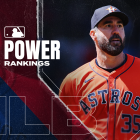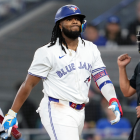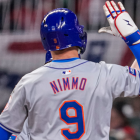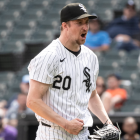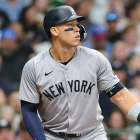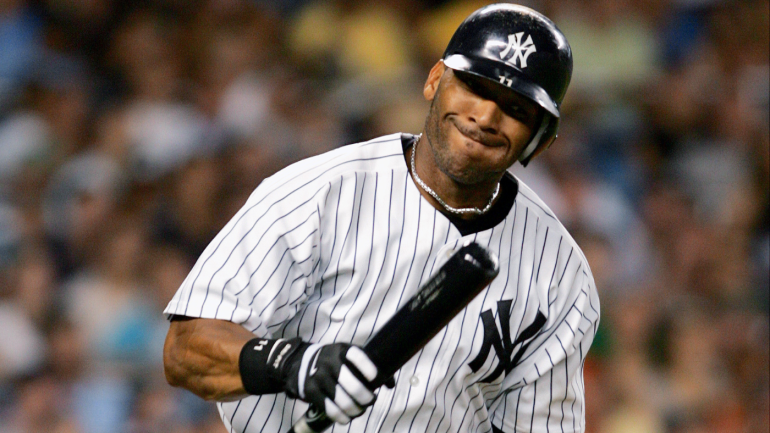
The results of the 2024 Baseball Hall of Fame vote have been revealed and it's bad news for longtime MLB slugger Gary Sheffield. He got 63.9% of the vote and 75% is needed in order for a player to make the Hall of Fame. This was his 10th and final year on the ballot, so he won't be up for BBWAA consideration any longer. It's possible an Era committee will vote on Sheffield in the near future (that's how Fred McGriff made it last year), but for now, he's left out in the cold.
There was something notable about Sheffield's final go-round on the ballot, though. He had one of the highest final vote percentages.
Going back to 1966, when the Hall of Fame started holding BBWAA votes every year instead of every other year, here are the 10 highest final-year percentages from players who didn't get to the required 75%
1. Nellie Fox, 1985, 74.7%
It took Fox 15 iterations of the BBWAA ballot to rise from 10.8% to just on the precipice of induction. What a gut punch it must've been for Fox's family members -- he died in 1975 at age 47 -- to hear that he fell two votes shy. Two!
Fox eventually was immortalized with a bust in Cooperstown, though, as the 15-time All-Star and one-time MVP second baseman was elected by the Veteran's Committee in 1997.
2. Orlando Cepeda, 1994, 73.5%
The 11-time All-Star and 1967 NL MVP went through waves of increases and then stagnation through his 15 years on the ballot, finishing seven votes out of 456 short of induction in '94. He was the beneficiary of a nice final-year bump (nearly 14%), but it just wasn't enough.
Cepeda had to wait another five years until the Veteran's Committee elected him in 1999, but he got to enjoy the experience nonetheless.
3. Red Ruffing, 72.6%, 1967
An odd case, Ruffing fell seven votes shy in his final year of voting but ended up making it that year anyway.
As noted, prior to 1966, BBWAA votes alternated years with veteran committee votes. The first BBWAA vote held for the 1967 class saw no player get to 75%. In order to give eligible players a better chance at induction, a runoff election was held and Ruffing led the way with 86.9% of that vote, gaining induction alongside vet committee selections Lloyd Waner (player) and Branch Rickey (executive).
4. Enos Slaughter, 1979, 68.8%
Slaughter's eligibility was exhausted after 14 tries on the ballot (there was a 20-year maximum after retirement for a while and he wasn't placed on the ballot until six years after he retired) and he was unable to crack even 69%. He topped out at 68.9% in 1978 and then fell to 68.8% in his final go-round.
Still, a the Veteran's Committee selected Slaughter in 1985 when he was still alive and well, so it was only a matter of waiting a few more years.
5. Barry Bonds, 2022, 66%
We know all about this one, right?
The main thing to remember is that while most others on this list had 15 years, Bonds (and the person below him) had only 10 years as it looked like the Hall of Fame was targeting the PED era with the rule change coming in 2014 and grandfathering in only the players who had already been on the ballot for more than 10 years. Bonds had already been on the ballot for two voting cycles.
A purge of the voting rolls from those who hadn't covered baseball for a while gave a bit of a boost and the momentum seemed to be gaining toward the end, but the 10 years just weren't enough. Fifteen very likely would've done it.
6. Roger Clemens, 2022, 65.2%
We all remember this one, too. Everything written above about Bonds applies to Clemens.
7. Gary Sheffield, 2024, 63.9%
Though Sheffield's candidacy came a bit later than Bonds and Clemens, he had an inferior case while also holding similar baggage due to the reported connection to BALCO and in the Mitchell Report. Even with a late push, it ultimately isn't a surprise that he fell a bit short of the Bonds and Clemens votes.
8. Jim Bunning, 1991, 63.7%
Bunning got incredibly close before going backward in support. He was at 70% in 1987 and then got to 74.2% in 1988, only four votes shy of induction. Then he went to 63.3%, 57.9% and 63.7% of the vote before falling off the ballot after his 15 years.
Still, the Veteran's Committee in 1996 elected Bunning and he was alive and well.
9. Gil Hodges, 1983, 63.4%
Hodgers only lived through four voting cycles on the ballot, seeing his tally top out a 50% in 1971. He remained on the ballot all the way through his 15th year, actually. He got a nice final-year bump of 14%, but it was still just under 12% shy. It would be nearly three decades before Hodges' story had a happy Hall ending.
The Golden Days Era Committee elected Hodges in 2022, technically as a player but his managerial accomplishments were allowed to be considered as well.
10. Jack Morris, 2014, 61.5%
The polarizing statistical case of Morris lasted all 15 years, topping out a 67.7% in 2013 but then falling down to the low-60s amid an incredibly crowded ballot in 2014. First-timers Greg Maddux, Tom Glavine and Frank Thomas flew in with ease and there were 11 others on the ballot who are already in the Hall of Fame. That doesn't even include big names like Bonds, Clemens, Curt Schilling, Jeff Kent, Mark McGwire, Don Mattingly, Sammy Sosa or Rafeal Palmeiro. That means one could argue that ballot alone included 22 worthy players.
Regardless, Morris made it in via the Modern Day Baseball Era Committee in 2018.














